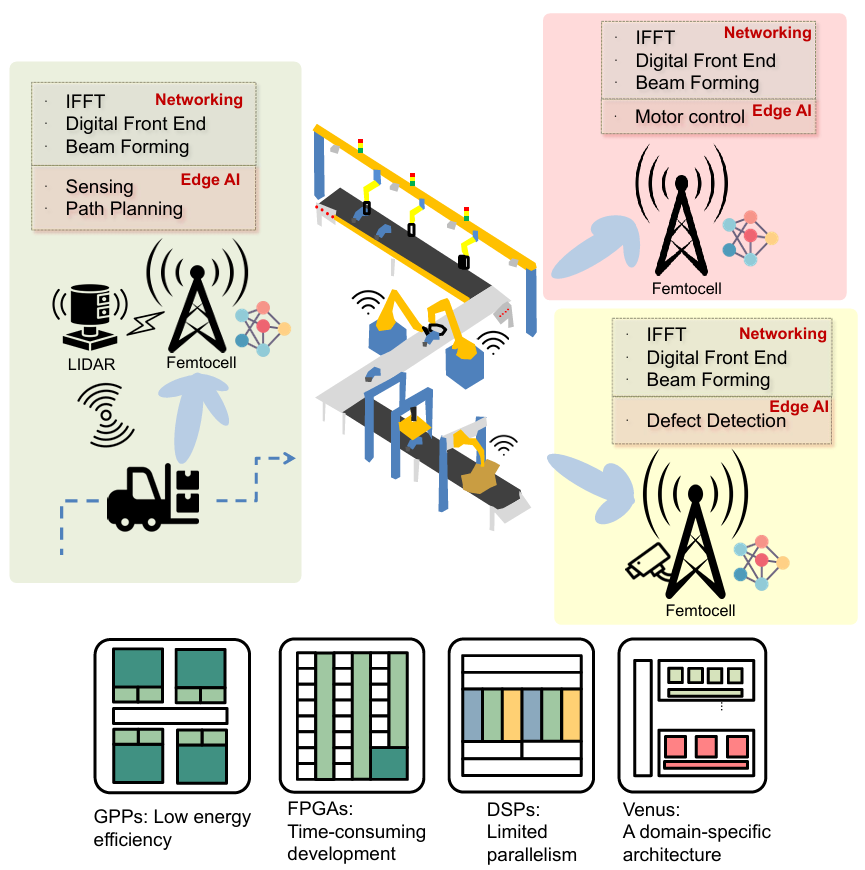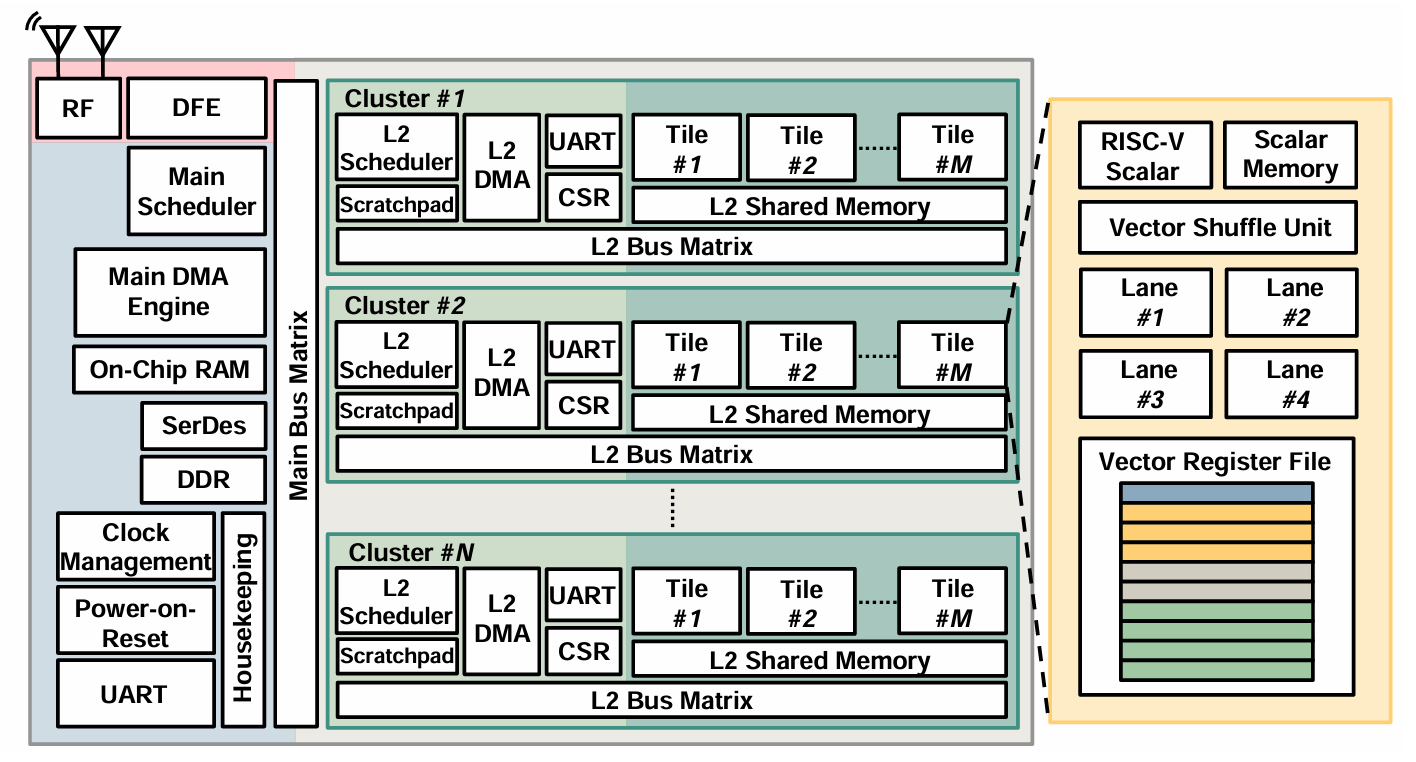📜Venus: A RISC-V Domain Specific Architecture towards Integrated AI and Wireless Baseband Processing for 6G Edge Intelligence
We are proud to announce that our team’s research paper on the Venus architecture has been officially accepted by the IEEE Wireless Communications Magazine 🎉🎉. As a RISC-V-based domain-specific architecture (DSA), Venus is tailored for 6G edge intelligence scenarios, enabling efficient integration of artificial intelligence and wireless baseband processing to address critical computing challenges in next-generation networks.
Pain Points in 6G Edge Computing and Venus’ Breakthrough Solutions
6G local area networks (LANs) impose higher demands on edge devices, requiring them to support real-time AI inference while efficiently processing complex wireless baseband signals. However, existing computing architectures struggle to balance efficiency and flexibility: general-purpose processors suffer from low energy efficiency, dedicated chips lack programmability, and GPUs exhibit poor resource utilization in wireless signal processing due to inherent data dependencies. Venus architecture emerges as a solution. Leveraging the open RISC-V ecosystem and domain-specific optimizations, it strikes an optimal balance between programmability and efficiency. As demonstrated in 6G scenarios like smart factories (Fig. 1), Venus is well-suited to meet the diverse needs of edge intelligence.

Core Design and Advantages of Venus Architecture
Venus’ innovations span multiple layers. On the hardware front, it adopts a multi-level dataflow-driven manycore architecture (Fig. 2) with a three-tier scheduling mechanism (main scheduler, cluster, and tile), utilizing non-uniform memory access (NUMA) to enable localized data processing and reduce energy consumption from data movement. Each tile is equipped with vector processing lanes, supporting flexible register regrouping and dynamic vector length adjustment.

On the software side, a complete LLVM-based toolchain is developed, featuring a domain-specific programming language (DSL) that simplifies task dependency definition and hardware resource mapping for developers. In terms of performance, compared with existing architectures (Table 1), Venus excels in area, power consumption, and energy efficiency. Its 16-lane tile outperforms traditional architectures in 5G physical layer tasks and offers excellent scalability to support 6G large-bandwidth scenarios.

Check out our paper at : [ Not online yet ]